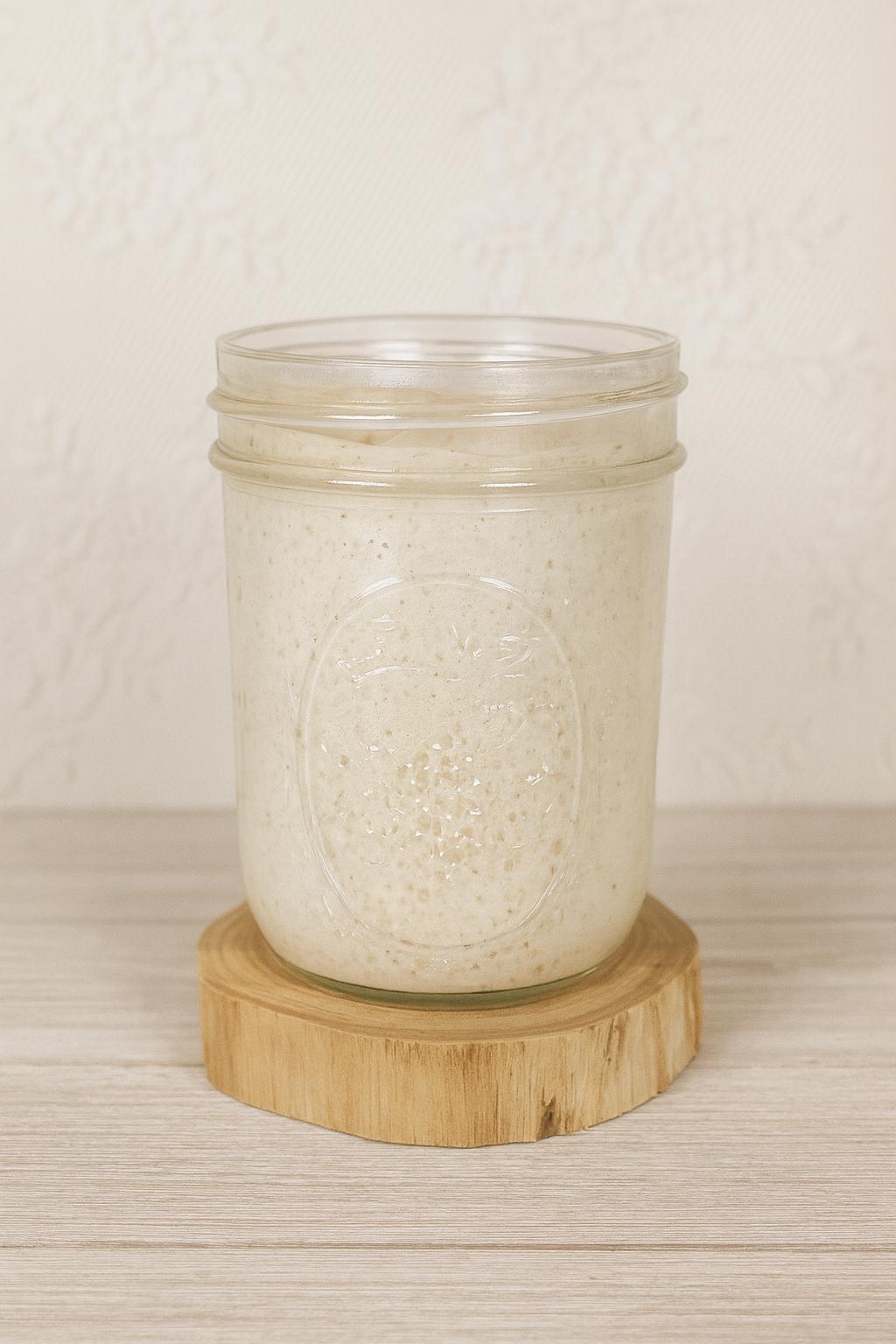Welcome to Appalachia Wildwood Sourdough!
Sweet Herman Sourdough Starter Activation instructions:
Day 1
In a glass jar, dissolve 12 gram packet of starter in 25 grams of room temperature filtered water (no less than 65 degrees and no hotter than 90). Add 12 grams of unbleached, organic bread flour or organic whole wheat flour (I like king Arthur). Cover loosely and let sit in warm place overnight. Do not set directly on a counter as most counters are cooler than the ambient temperature in the room. You can also wrap a tea towel around the bottom of the jar to help keep it warmer. Starters tend to do better in warmer places. If your kitchen is cold (below 75 degrees) you will have more success if you place your jar in an oven with the light on, in a warm cabinet, on a warm window sill out of the sun (behind curtain), or the most reliable method is to use a heat mat with a thermostat (typically used for seed sprouting).
Day 2
To the 50 grams of starter add 50 grams of room temperature filtered water, 25 grams of organic sugar (or any real sweetener like maple syrup or honey), and 75 grams of flour of choice (I use organic bread flour or wheat flour). The starter should be thick, like brownie batter. If it is too dry and looks like dough that needs to be rolled out, you can add a little water at a time until it reaches brownie batter consistency (the kind of flour used will affect the thickness, it’s best to start with bread flour or wheat flour, and then branch off later to other flours once the starter is thriving). Set in warm location. You should notice the batter rise and many air holes or bubbles on the sides of the jar. The top should bubble slightly. Due to the sugar content your starter will not rise like a regular sourdough starter, but you will see the evidence of fermentation in the bubbles.
Day 3
If your starter did not bubble or rise, keep it in a warm location for another 24 hours to let it catch up and then proceed. As long as your starter has bubbled and risen a little, this is the only time when you will discard starter. You can add it to a muffin, cake, or cookie recipe if you desire. Stir starter down and discard all but 25 grams of starter. In a clean jar add the 25 grams of starter, 75 grams of filtered water, 50 grams of sugar (or natural sweetener), and 100 grams of bread flour. This will be thick like brownie batter. If it is dry and all the flour is not incorporated add a little bit of water at a time to reach the brownie batter consistency.
Day 4
You should be ready to bake with your sweet starter. You created the preferment required in the recipe on day 3. Place 25 grams of starter in clean jar and use the rest for your recipe. The 25 grams in the clean jar is now your starter, cover loosely with lid, beeswax cover, or cellophane and place in fridge. This can stay in the fridge undisturbed for a few weeks. If it has been longer than 2 weeks or you notice a layer of liquid on top, stir in 12 grams of flour, 6 grams of sugar and just enough water to incorporate everything and place back in fridge. Only add water if the starter becomes too stiff to stir. You only need to keep 25 grams of starter at any time in the fridge, unless you do want discard for recipes, then feed and use as necessary.
Notes: All flours should be unbleached and organic. I like the King Arthur brand for their consistency and quality.
All sugar should be organic or sweetener of natural origin (honey or maple syrup).
All water should be filtered. NO TAP WATER. Chlorine and fluoride will kill the native yeasts in your starter.
If your starter does not activate in the above steps, let it sit in a warm spot for a day or two to see if it activates. It should smell warm, yeasty (like fresh bread) and mildly sour. If it just smells like flour and has not risen, it is likely not in a warm enough location which is slowing the fermentation. If it smells like acetone, then it has become acidic. If that is the case, it just means it is really active and hungry. Discard all but 25 grams and start with Day 3.
This is an unpopular opinion, but it is a fact that some kitchens are too cold for sourdough (mine is). If your starter looks and smells active but you just can’t get your loaves to rise correctly the temperature is almost always the problem. Instead of fighting and losing with recipes just add 1 teaspoon of instant active dry yeast to the room temperature water used in your bread recipe (not in the starter, but to the water in the mixing bowl). Follow all of the rest of your steps in the recipe unchanged. You will find that you still get all of the flavor from your starter (chocolate or not) and you get that bakery quality rise in your bread.
If you have any questions or concerns you can email me at appalachiasourdough@gmail.com or check out the blog at appalachiasourdough.com.
